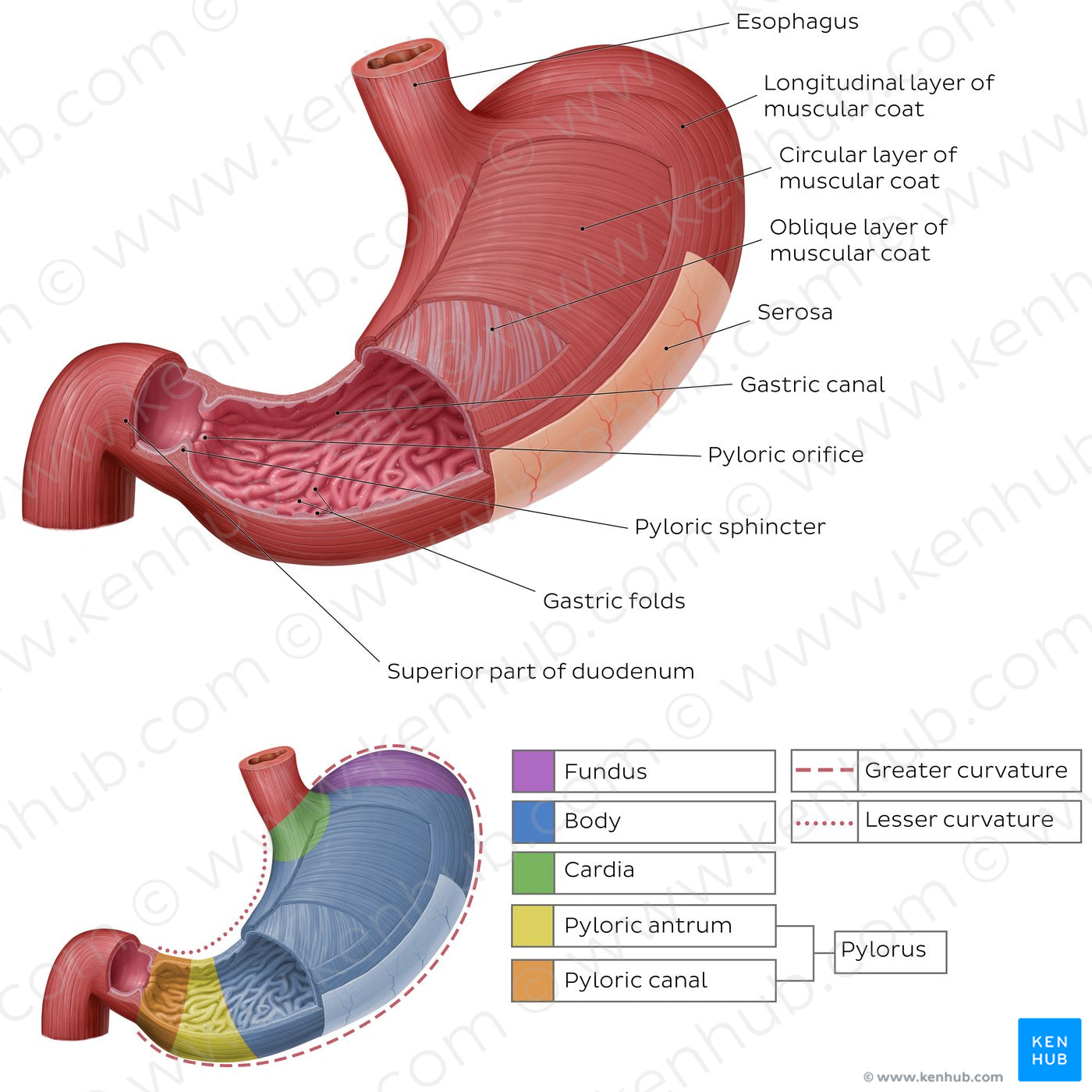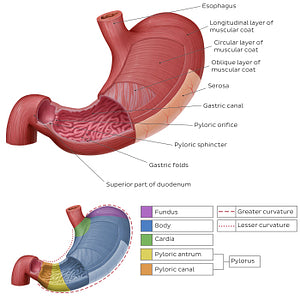Rebecca Betts
Musculature and mucosa of the stomach (English)
Musculature and mucosa of the stomach (English)
Outer and inner surfaces of the stomach. The upper image shows the external features of the stomach. The stomach is composed of three muscular layers. The outermost layer is the longitudinal muscle layer. Its fibers are mostly situated on the greater and lesser curvatures. The middle layer is the circular muscle layer composed of circular muscle fibers. This layer comprises the pyloric sphincter which serves to regulate the passage of digested food into the duodenum. When these two layers are removed, the innermost layer, the oblique muscle fibers become visible. This layer is responsible for the peristaltic movement that churns and breaks down food in the stomach. In the image below, the anterior wall of the stomach has been removed to reveal its internal features. The most prominent features seen on the mucosa of the stomach are the gastric folds (gastric rugae). The gastric canal runs along the lesser curvature of the stomach and is formed by the longitudinal muscle fibers of the stomach. The pylorus represents the terminal part of the stomach. It is divided into two parts, the pyloric antrum, which connects to the body of the stomach, and the pyloric canal, which connects to the duodenum by the pyloric orifice.
Normaler Preis
$7.56 USD
Normaler Preis
Verkaufspreis
$7.56 USD
Grundpreis
pro
Verfügbarkeit für Abholungen konnte nicht geladen werden


#C55E39
#71A15D
#6E1513
#4F4A4E
#E47B8A und #D8C5B6

